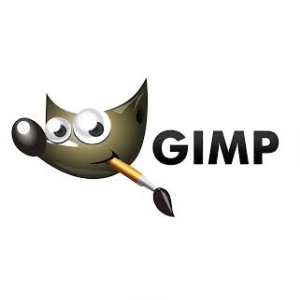
-
Here’s a detailed explanation of GIMP (GNU Image Manipulation Program) based on the categories you provided:
1- On which platform are the tools used?
✅ Supported Platforms:
- Windows
- macOS
- Linux
- BSD-based OS (FreeBSD, etc.)
💡 GIMP is a cross-platform tool and works on almost all major operating systems.
2- What hardware requirements are needed?
🔹 Minimum & Recommended System Requirements:
Component
Minimum Requirements
Recommended Requirements
Operating System
Windows 7 or later, macOS 10.9+, Linux
Latest version of OS
CPU
Intel Pentium 4 or higher
Intel Core i5/i7, AMD Ryzen 5/7
RAM
2 GB or higher
4 GB or higher
Hard Drive
200 MB of free disk space
1 GB or more for caching and brushes
Graphics Card
GPU with OpenGL 2.1 support (optional)
Dedicated GPU (NVIDIA, AMD) for better performance
Resolution
1024 x 768 or higher
1920 x 1080 or higher
💡 GIMP runs well on most modern systems but benefits from higher specs for performance, especially with large files.
3- Installation and membership stages
🔹 Installation:
- Download GIMP:
- Visit GIMP’s official website.
- Choose the version for your operating system (Windows, macOS, or Linux).
- Installation Process:
- Windows: Download the .exe file and follow the setup prompts.
- macOS: Download the .dmg file, mount it, and drag GIMP into the Applications folder.
- Linux: Install via package manager (sudo apt install gimp for Ubuntu-based distributions).
🔹 Membership/Account Stages:
- Free and Open-Source:
- No registration or membership is required to use GIMP.
- All features are available to everyone at no cost.
💡 GIMP is free and open-source software, which means no accounts or paid tiers are necessary.
4- What can it be used for?
✅ Primary Uses:
- Photo Editing:
- Basic and advanced image retouching, color correction, and manipulation.
- Graphic Design:
- Creating and editing logos, illustrations, icons, and web design elements.
- Digital Painting:
- Painting and drawing using a variety of brushes and tools.
- Raster Graphics Creation:
- Editing pixel-based images (JPEG, PNG, GIF, TIFF, BMP).
- Batch Processing:
- Automating repetitive tasks like resizing, cropping, or watermarking images.
- File Format Conversion:
- Converting images between multiple formats.
- Texturing & 3D Modeling (for beginners):
- GIMP can be used in texturing 3D models in combination with other tools like Blender.
💡 GIMP is a versatile image editor that serves as an alternative to Adobe Photoshop, offering a wide range of creative uses.
5- What is its prominent feature compared to other tools?
✅ Key Features of GIMP:
- Open Source & Free:
- It’s completely free to use with no hidden charges or restrictions.
- Highly Customizable:
- Supports plug-ins, scripts, and a wide array of tools to extend its functionality.
- Advanced Image Manipulation:
- Supports layers, masks, and advanced tools like curves, paths, and filters.
- Extensive File Format Support:
- Supports almost all image formats, including high-end professional formats.
- Non-Destructive Editing:
- Allows you to make adjustments without permanently altering the original image using layers and masks.
- Community and Extensions:
- Large online community with tutorials, free resources, and hundreds of downloadable extensions.
💡 The main feature setting GIMP apart is its open-source nature, making it highly customizable and free for everyone.
6- Sample application made with pictures
Example 1: Digital Artwork/Illustration
- Objective: Create a digital painting using brushes, layers, and blending modes.
- Result: A fully realized illustration or concept art piece.
Example 2: Photo Retouching
- Objective: Use GIMP’s photo manipulation tools to remove blemishes, adjust lighting, and enhance colors.
- Result: A polished and professional-looking photo.
7- Which courses can it be used in and is compatible with?
✅ Compatible with Various Courses:
- Graphic Design:
- Learn about image editing, logo creation, digital illustration, and web design.
- Photography:
- Courses focused on photo retouching, color correction, and manipulation.
- Digital Art & Animation:
- Ideal for courses on digital painting and creating digital art.
- Web Design:
- Web graphics creation, UI/UX design, and designing website elements like buttons and icons.
- Game Design (Texturing):
- Creating textures and 2D assets for games.
💡 GIMP is widely used in courses related to graphic design, photography, art, and web development.
8- Is it free?
✅ Yes, GIMP is completely free and open-source.
- No paid versions or subscriptions.
- Fully accessible for all users, including students and professionals.
- No limitations on features or usage.
💡 GIMP’s open-source nature allows anyone to download and use it at no cost.
9- Links related to it
🔗 Official Website: GIMP
🔗 GIMP Downloads: Download GIMP
🔗 Tutorials & Documentation: GIMP Documentation
🔗 Community & Forums: GIMP Forums
🔗 GIMP on GitHub (for Developers): GIMP GitHub🔹 Conclusion
GIMP is a powerful, open-source alternative to expensive image editing software, offering users a wide range of capabilities for photo editing, graphic design, and digital art creation. It’s ideal for students, freelancers, and professionals looking for a free yet capable image manipulation tool.